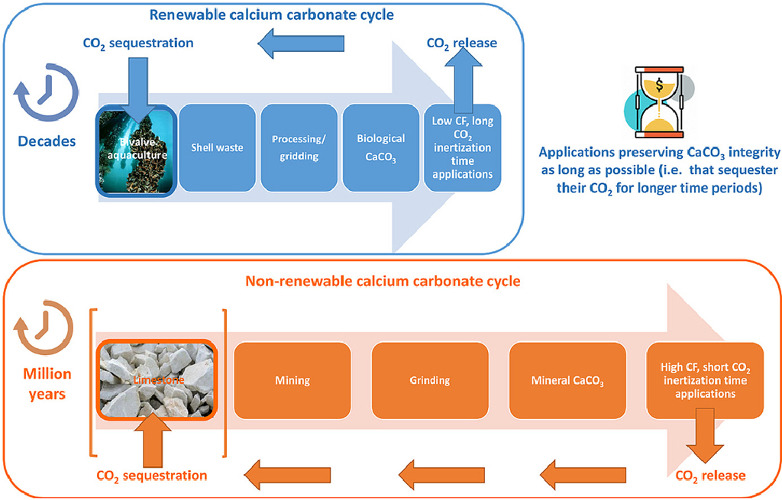A.A. Alonso, X. A. Álvarez-Salgado, L. T. Antelo
https://digital.csic.es/handle/10261/220821
Abstract
Global production of shell calcium carbonate (CaCO3) from bivalve aquaculture amounts about 13.6 million metric tons per year. Shells, traditionally considered a waste of aquaculture activities, have recently acquired an interest under the current framework of zero waste circular economy. Shell CaCO3 is a sustainable biomaterial that could partly replace the presently dominating non-renewable mineral sources in some applications. Although the carbon footprint of powdered CaCO3 production from biological or mineral sources are about the same, the environmental impact is notably different. Furthermore, bivalve CaCO3 contributes to sequester anthropogenic carbon dioxide (CO2) during shell formation, although this is still controversial. Anyway, the integration of bivalve aquaculture in the carbon trading market would demand that shell CaCO3 is employed in activities that sequester their CO2 for prolonged time periods. Ideally, these activities should combine 1) providing the maximum added value to the biomaterial; 2) producing the lowest carbon footprint during their life cycle; and 3) preserving the CaCO3 integrity as long as possible. In this review, we analyse the effect of bivalve consume habits, particularly mussel, on the availability of shells and their possible agricultural, industrial, and environmental engineering applications from these multiple perspectives. Furthermore, global, continental and regional demands of CaCO3 are matched with their respective mussel aquaculture productions in an effort to scale up offer and demand.




